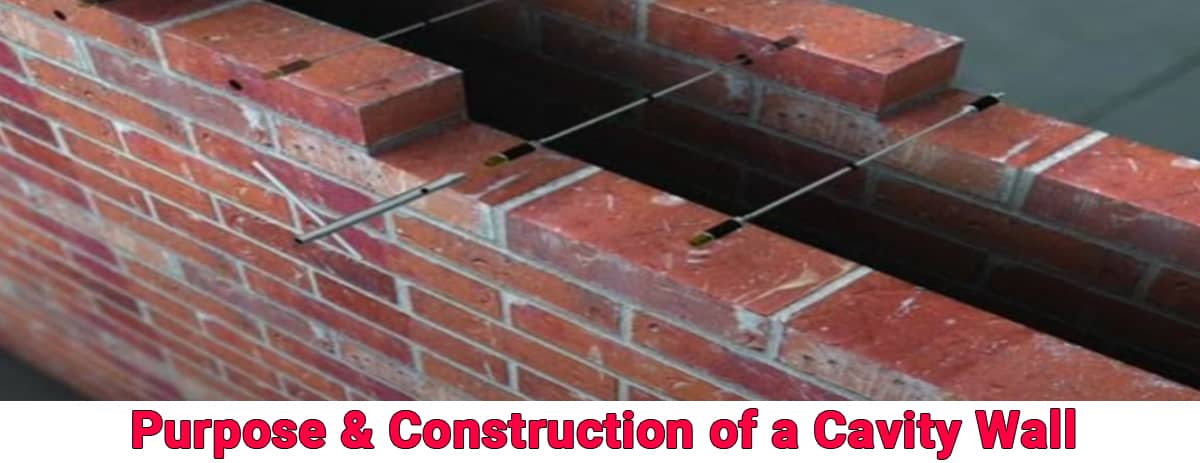Purpose & Construction of a Cavity Wall

Cavity Wall
It is a wall made of two equal degrees of stone work, isolated by a persistent air space. Nonstop space is known as a cavity.
Cavity walls comprise of three primary parts:
- The external leaf which, is the outside piece of the wall
- The cavity, the nonstop outside space
- The inward leaf, which is the inside piece of the wall
Reason for Cavity Walls
The cavity walls are accommodated for the accompanying reason:
It is made possible in mild of the truth that some thing dampness receives infiltrated via the outside leaf is uncovered to dissipation via way of means of the air in the hollow space, as cavities are saved all round ventilated.
Heat Insulation
The air withinside the hollow space is going approximately as a non-conductor of heat warm temperature and sooner or later limits the transmission of heat from the outer substance of the inner leaf. In this manner hollow space partitions assist relatively withinside the heat safety of the structures.
Auditory Barrier
The air withinside the hollow space wall is going approximately as a pad for maintaining sound, via way of means of embracing hollow space partitions constructing is probably rendered soundproof as good sized outdoor commotion receives ingested withinside the hollow space.
Blossoming
As suddenness isn`t accepted to go into via way of means of a hollow space, the inner wall of the hollow space that is continuously a heap bearing wall is saved liberated from blooming impact.
Economy
Cavity partitions are located to forged approximately 20% of the development of the identical thickness sturdy wall.
Size And Location of Cavity Wall: The hollow space among leaves ought a minimum of 50 mm and now no longer in extra of seventy five mm. The hollow space is probably constant or ventilated.
A constant hollow space is an increasing number of a hit for decent safety. Meanwhile a ventilated one is regularly effective for soggy counteraction air flow of cavities is probably gotten via way of means of using an air block withinside the outside leaf near base and pinnacle of the hollow space.
The hollow space would possibly have all started from the best factor of the muse concrete square, but it's far visible that the hollow space under the sodden proof route does not fill any need. Henceforth established upon one hundred to three hundred mm under D.P.C. at plinth level, brickwork withinside the basis is usually constructed sturdy.
The hollow space would possibly have began uniquely round a hundred and fifty mm underneath the D.P.C. stage. This a hundred and fifty mm profundity underneath DPC facilitates in drawing any dense dampness under the diploma of DPC.
Soggy proof path for the 2 leaves of the wall is decided to an man or woman premise bye at a similar stage.
The hollow space can also additionally lead instantly as much as the very best factor of the parapet and modified over with the aid of using replicating and D.P.C. It would possibly have halted tiers but D.P.C. ought to be laid over the hollow space.
Installation Details of Cavity Wall: The hollow space partitions have leaves inward and outside with hollows withinside the center of them. Width of the hollow space shifts from 50 mm to seventy five mm.
The thickness of the outside leaf of the wall that's usually a non-load bearing wall is half-block. Inward wall is continually load-bearing and its thickness ought now no longer be brief of 1 block.
The portions of the wall are related with the aid of using wall ties or fortified blocks. Metal wall ties are dispersed at stage periods of approximately 0.ninety mm and vertical meantime of 450 mm.
The wall tie have to be orchestrated in a staggered manner. The outside wall is continually in stretcher bond, but it thoroughly can be advanced in extraordinary bonds too with the aid of using using brickbats.
